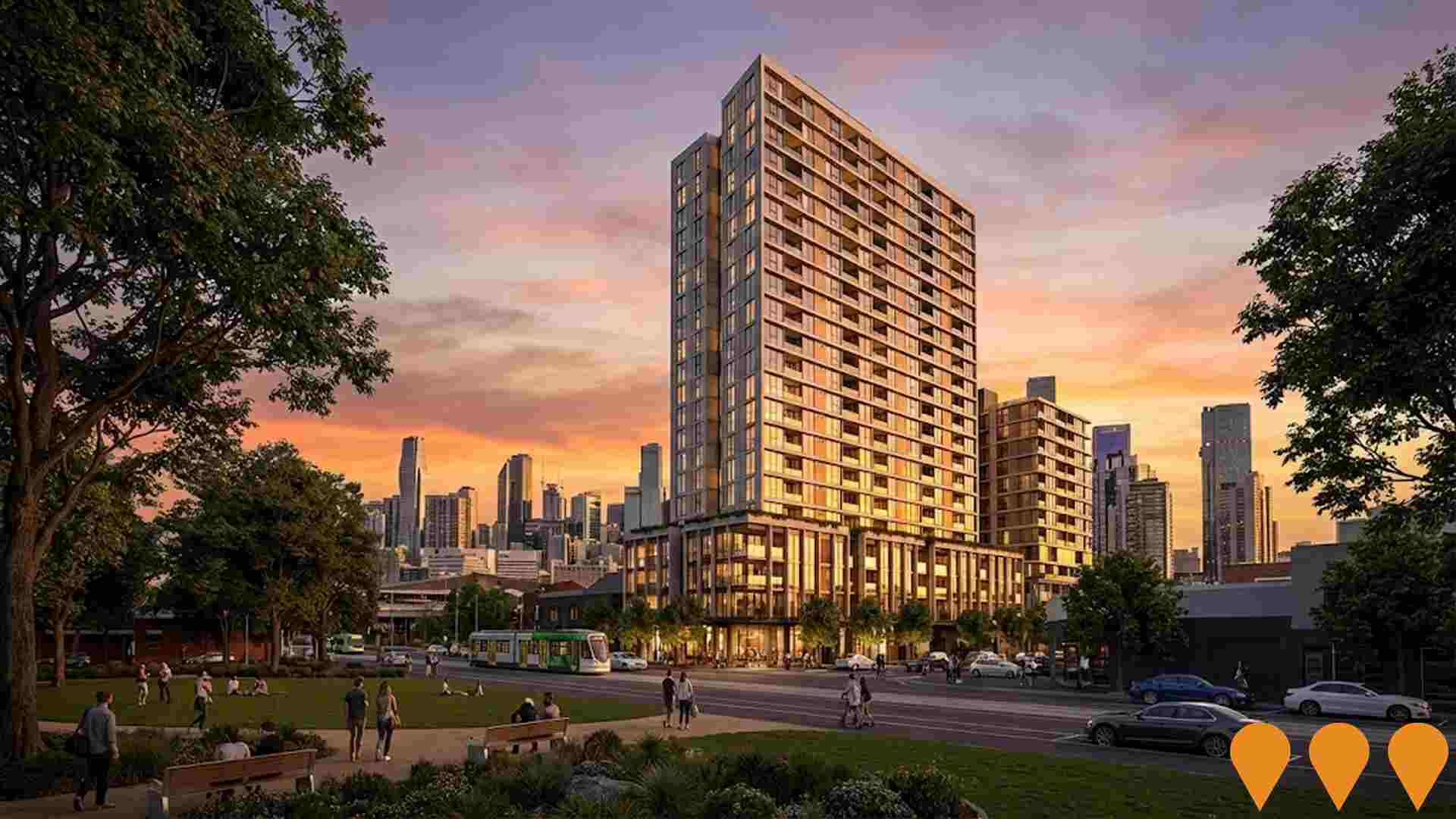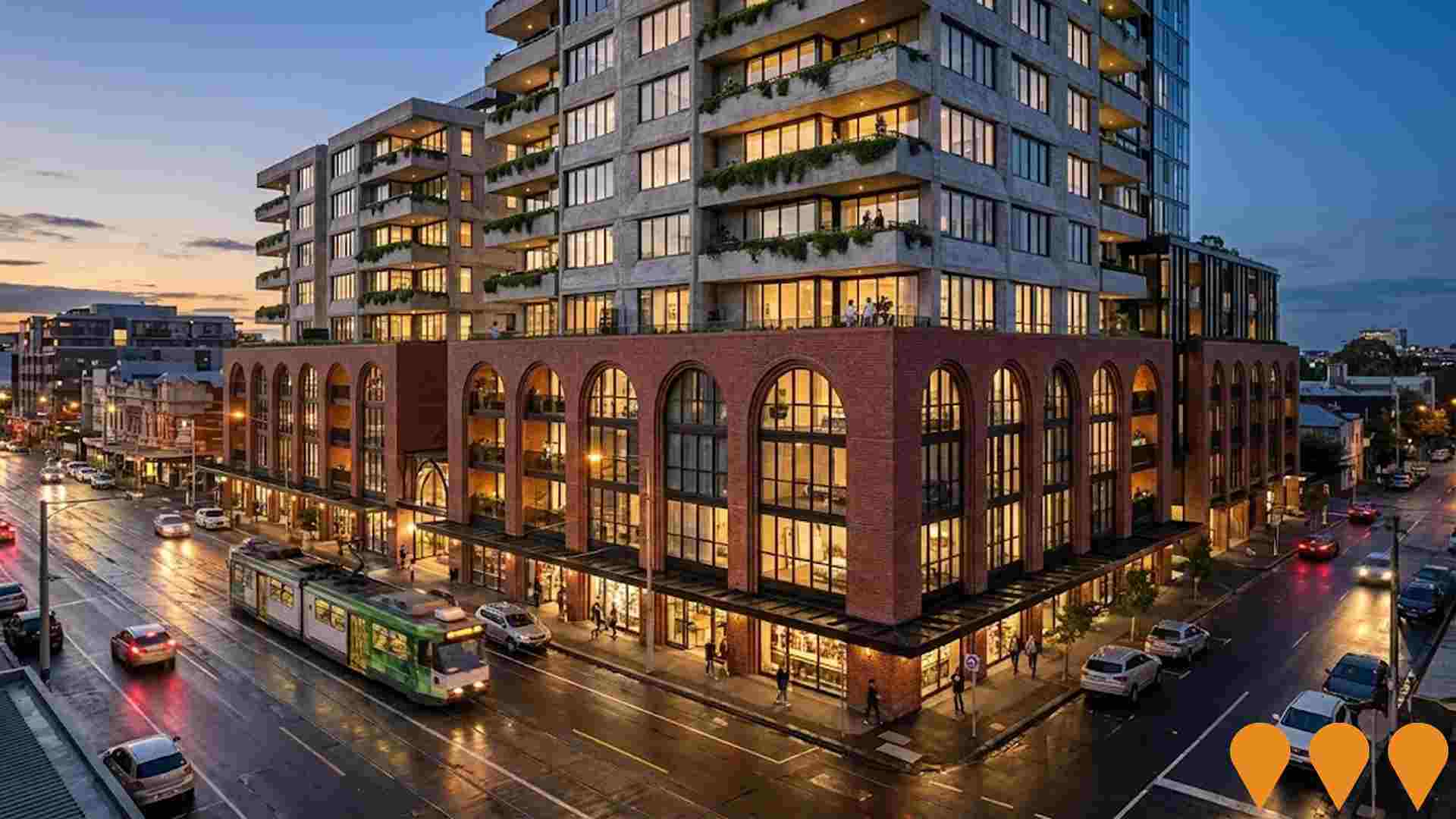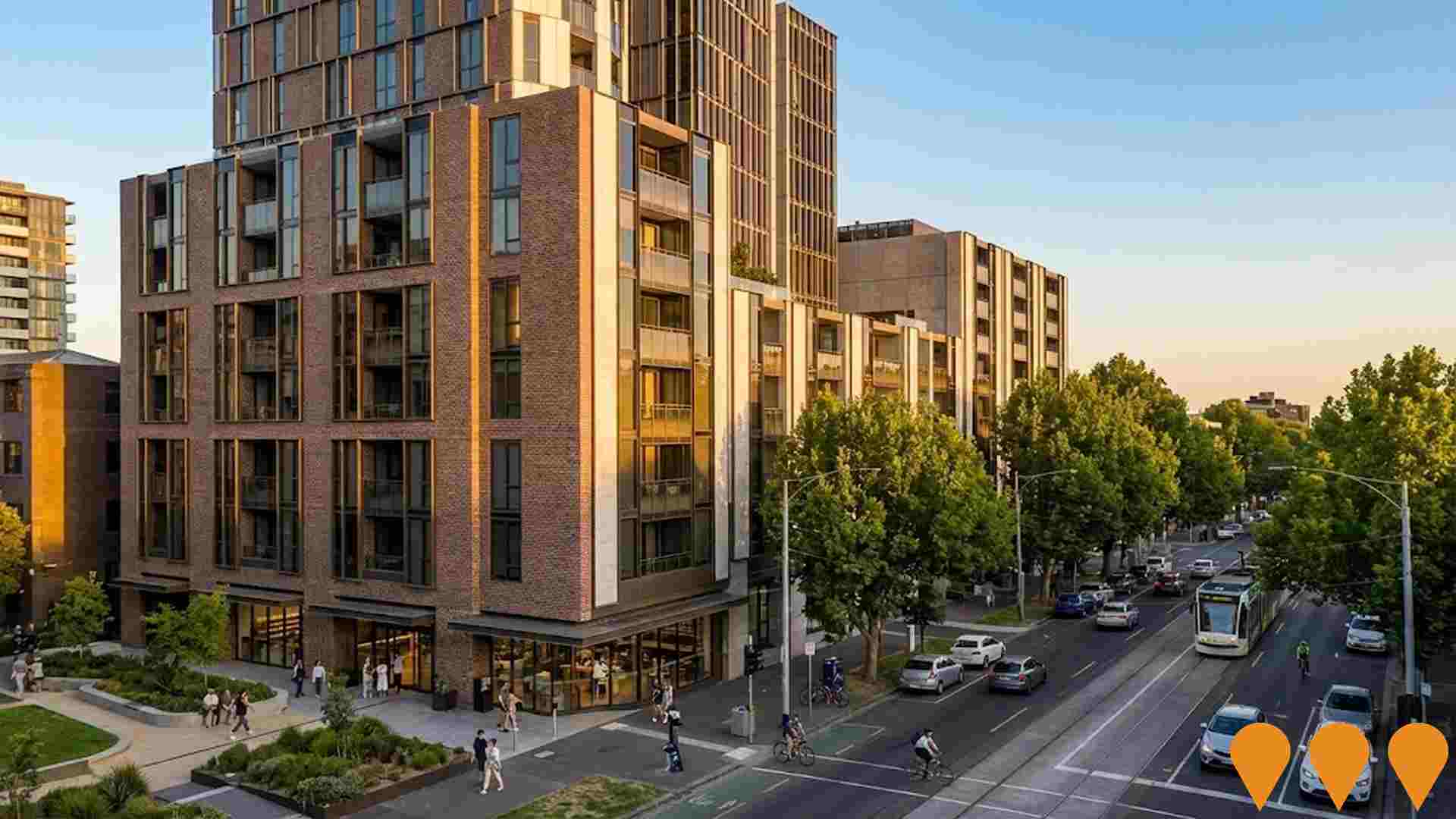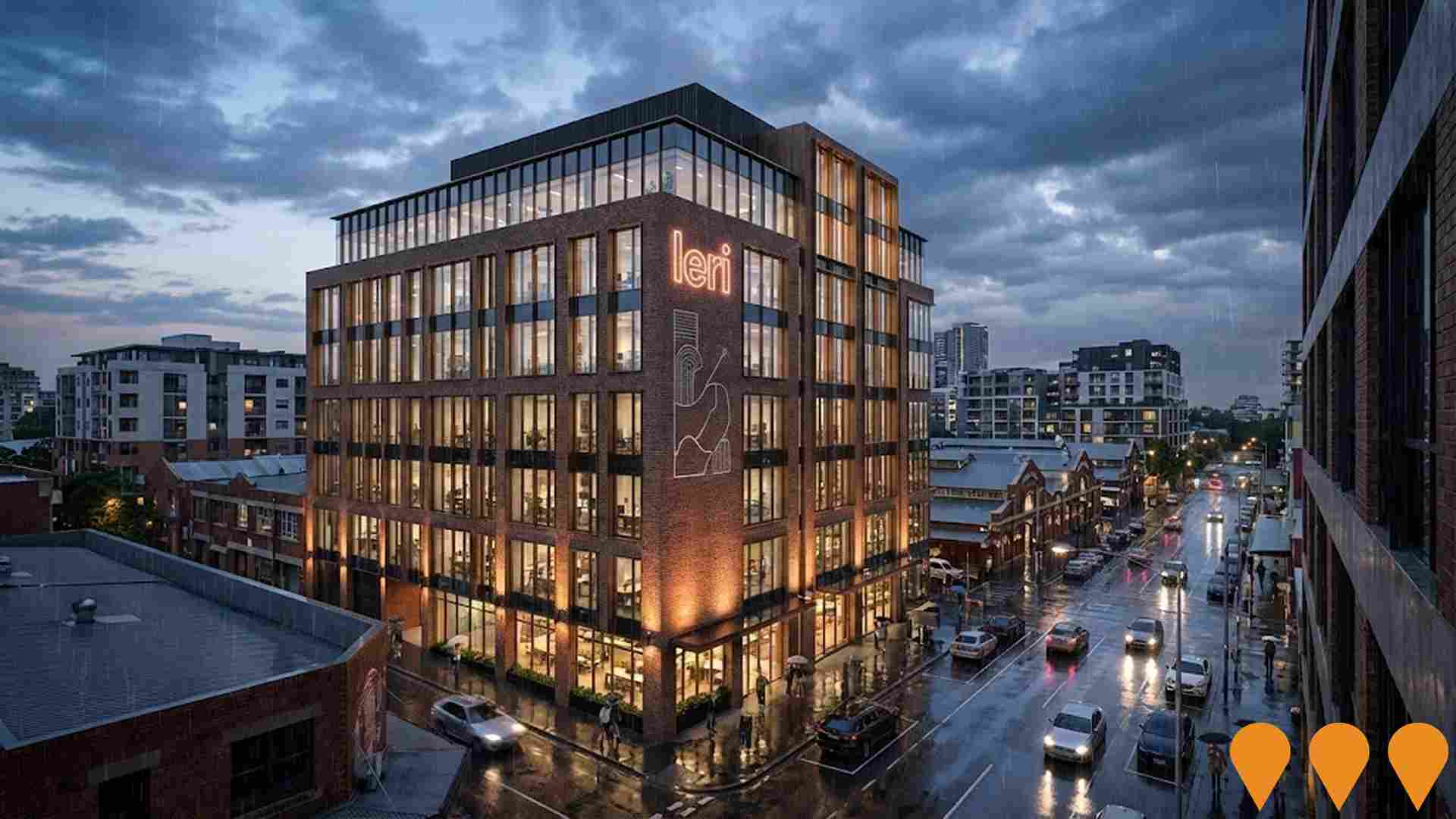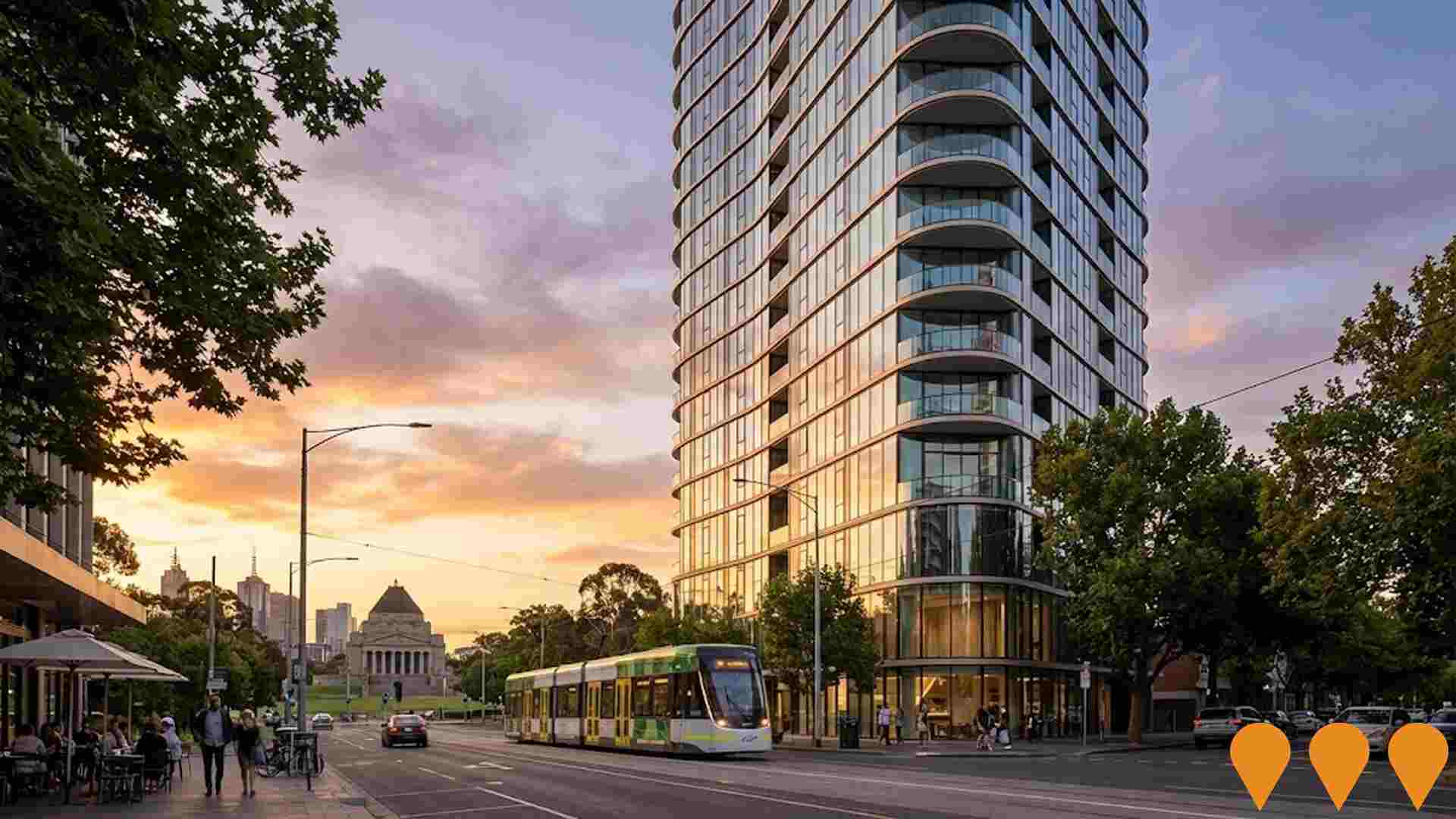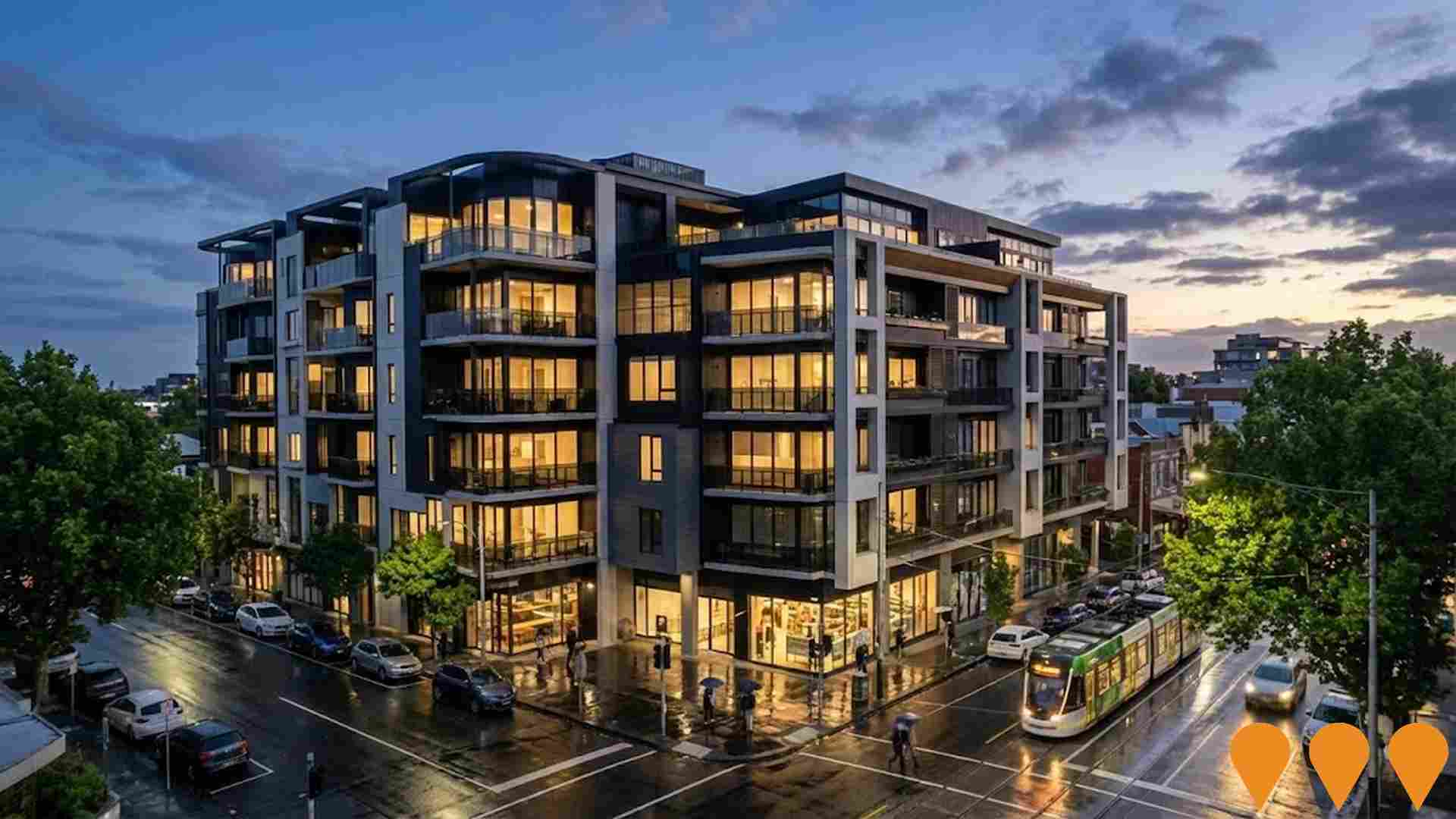Chart Color Schemes
est. as @ -- *
ABS ERP | -- people | --
2021 Census | -- people
Sales Activity
Curious about local property values? Filter the chart to assess the volume and appreciation (including resales) trends and regional comparisons, or scroll to the map below view this information at an individual property level.
Find a Recent Sale
Sales Detail
Population
Population growth drivers in South Melbourne are strong compared to national averages based on AreaSearch's ranking of recent, and medium to long-term trends
South Melbourne's population, as of November 2025, is approximately 13,022. This figure represents a growth of 1,329 people, an increase of 11.4% since the 2021 Census which recorded a population of 11,693. The change was inferred from the estimated resident population of 12,916 in June 2024 and an additional 429 validated new addresses since the Census date. This results in a population density ratio of 6,889 persons per square kilometer, placing South Melbourne in the top 10% of national locations assessed by AreaSearch, indicating high demand for land in the area. South Melbourne's growth of 11.4% since the 2021 Census exceeded both the national average (8.9%) and the state average, positioning it as a growth leader in the region. Overseas migration was the primary driver of population growth during recent periods.
AreaSearch is using ABS/Geoscience Australia projections for each SA2 area, released in 2024 with a base year of 2022. For areas not covered by this data, AreaSearch employs VIC State Government's Regional/LGA projections from 2023, adjusted using weighted aggregation methods to SA2 levels. Growth rates by age group are applied across all areas for the years 2032 to 2041. Based on projected demographic shifts, a significant population increase in South Melbourne is forecasted, with an expected rise of 4,028 persons to 2041, reflecting a total increase of 30.1% over the 17-year period.
Frequently Asked Questions - Population
Development
Recent residential development output has been above average within South Melbourne when compared nationally
South Melbourne averaged approximately 231 new dwelling approvals annually over the past five financial years, totalling 1,157 homes. As of FY-26246 approvals have been recorded. On average, about 0.1 new residents arrived per new home each year between FY-21 and FY-25, suggesting that supply is meeting or exceeding demand. The average construction value of these new homes was $250,000, which is under regional levels, indicating more accessible housing choices for buyers.
In FY-26, commercial development approvals totalled $171.0 million, reflecting robust local business investment. Compared to Greater Melbourne, South Melbourne has 61.0% higher building activity per person, offering greater choice to buyers. However, recent periods have seen a moderation in development activity. This level is significantly above the national average, indicating strong developer interest in the area. Recent construction primarily comprises townhouses or apartments (96.0%), with detached houses making up 4.0% of new developments. This focus on higher-density living creates more affordable entry points and caters to downsizers, investors, and first-home buyers.
The location has approximately 1626 people per dwelling approval, indicating an established market. Population forecasts suggest South Melbourne will gain 3,922 residents by 2041. With current construction levels, housing supply should adequately meet demand, creating favourable conditions for buyers while potentially enabling growth that exceeds current forecasts.
Frequently Asked Questions - Development
Infrastructure
South Melbourne has very high levels of nearby infrastructure activity, ranking in the top 10% nationally
Changes to local infrastructure significantly influence an area's performance. AreaSearch has identified a total of 43 projects likely to impact the area. Notable projects include Emerald Hill Housing and Health Precinct, South Melbourne Town Hall Restoration, Verde Arts Precinct, and 122 Moray. The following list details those most relevant.
Professional plan users can use the search below to filter and access additional projects.
INFRASTRUCTURE SEARCH
 Denotes AI-based impression for illustrative purposes only, not to be taken as definitive under any circumstances. Please follow links and conduct other investigations from the project's source for actual imagery. Developers and project owners wishing us to use original imagery please Contact Us and we will do so.
Denotes AI-based impression for illustrative purposes only, not to be taken as definitive under any circumstances. Please follow links and conduct other investigations from the project's source for actual imagery. Developers and project owners wishing us to use original imagery please Contact Us and we will do so.
Frequently Asked Questions - Infrastructure
Emerald Hill Housing and Health Precinct
Redevelopment of the former Emerald Hill Court public housing site into a mixed-use precinct delivering approximately 430 new social and affordable homes together with a new 60-bed community hospital providing urgent care, dialysis, mental health, rehabilitation, allied health and community health services.
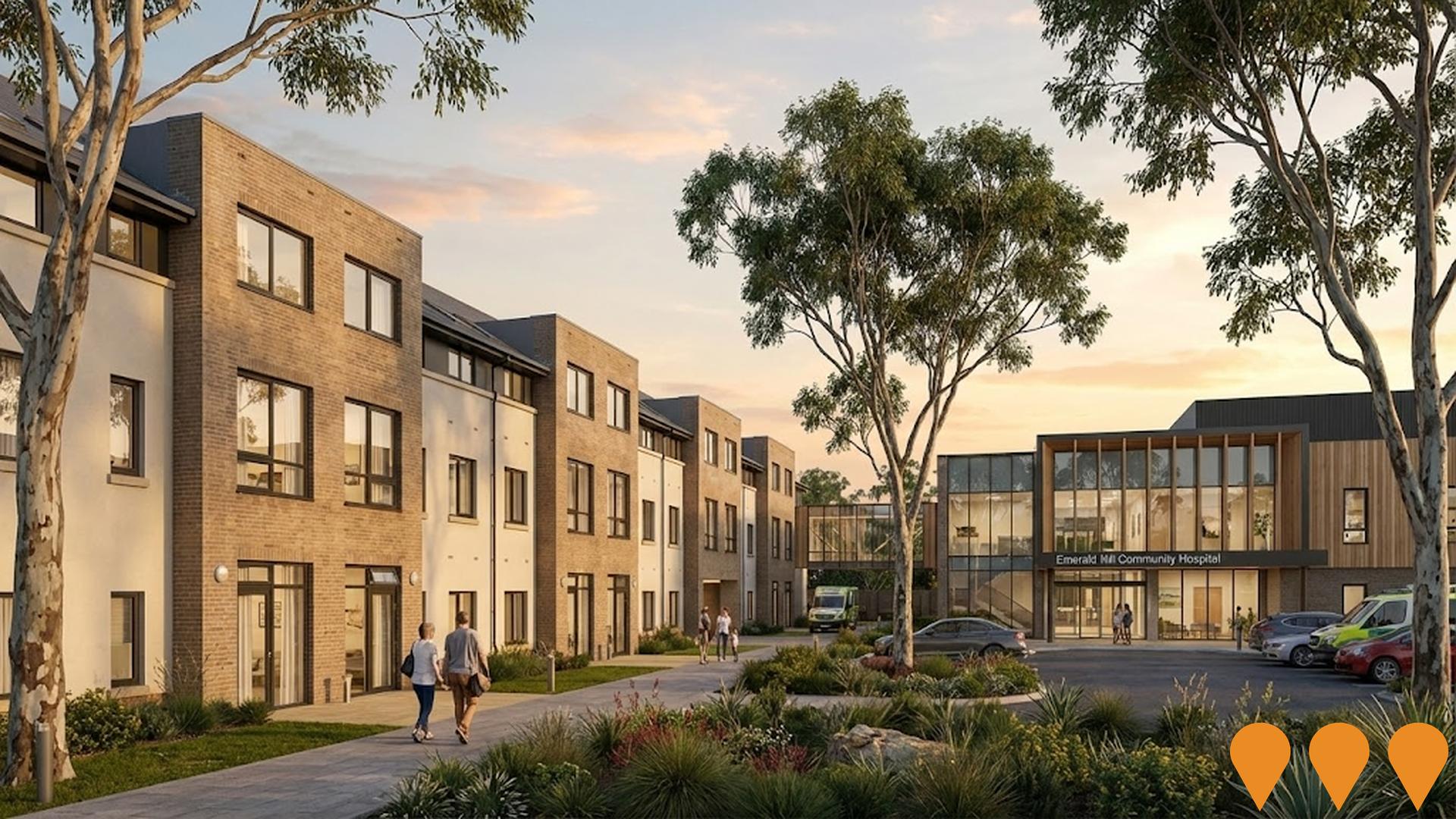
Future South Melbourne Structure Plan
The Future South Melbourne Structure Plan (adopted 2024) provides the long-term planning framework for South Melbourne over the next 20 years (2024-2044). It guides growth, built form, public realm improvements, transport, sustainability and community infrastructure in response to significant residential and employment growth expected in Fishermans Bend and surrounding areas.

Arts Centre Melbourne State Theatre Upgrades
The refurbishment of the heritage-listed State Theatre at Arts Centre Melbourne involves significant upgrades including improved accessibility with new seating and lifts, enhanced acoustics, modernized theatre technology such as lighting and broadcast infrastructure, better air-conditioning and flooring for comfort, expanded back-of-house facilities like loading dock and rehearsal spaces, and new food and beverage areas. This is the first major upgrade since 1984, aiming to bring the venue to contemporary standards.
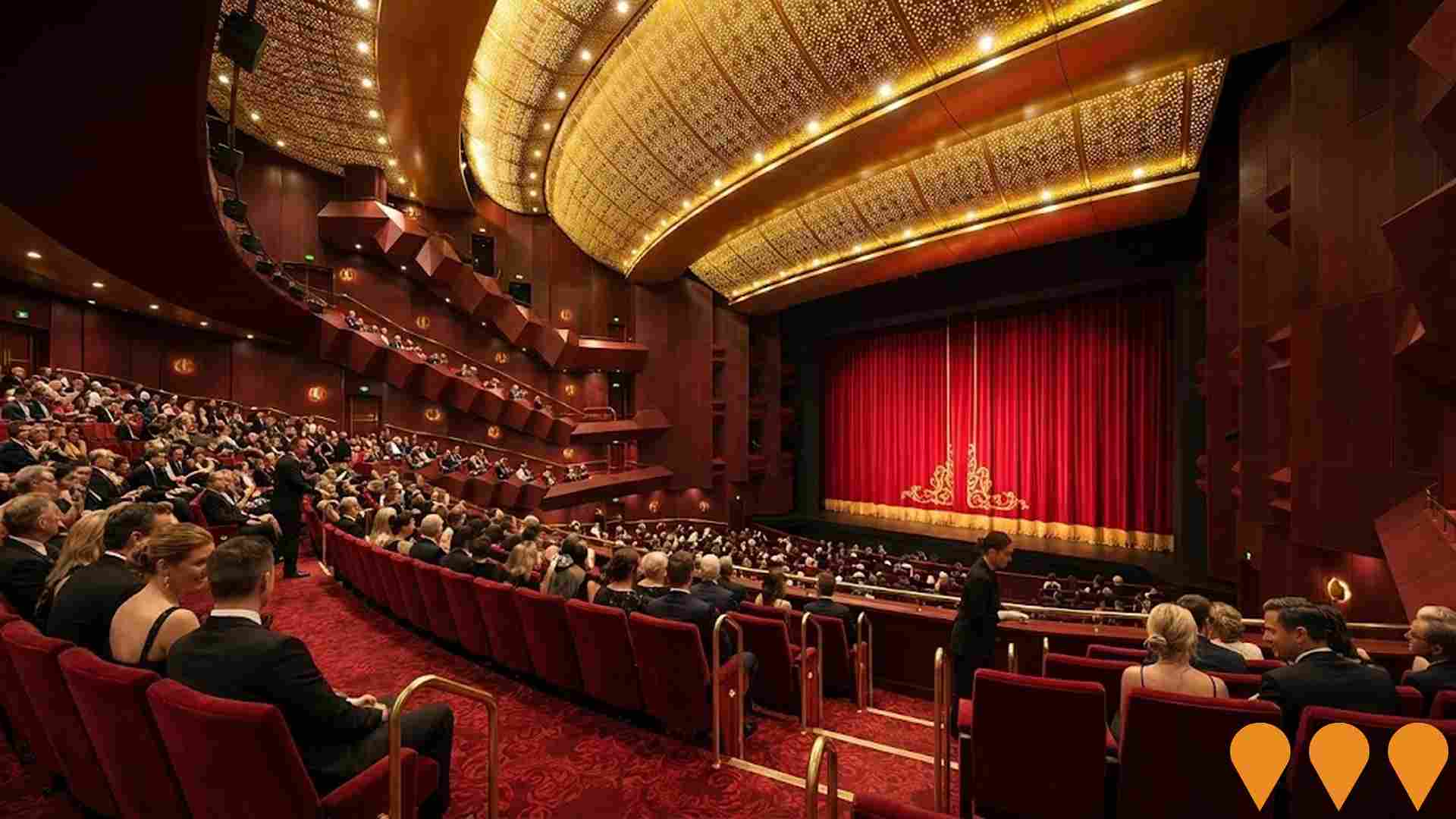
South Melbourne Town Hall Restoration
Major restoration and renewal of the historic South Melbourne Town Hall to preserve its heritage, ensure structural safety, and transform it into a vibrant cultural and community hub, including performance venues and facilities for the Australian National Academy of Music.
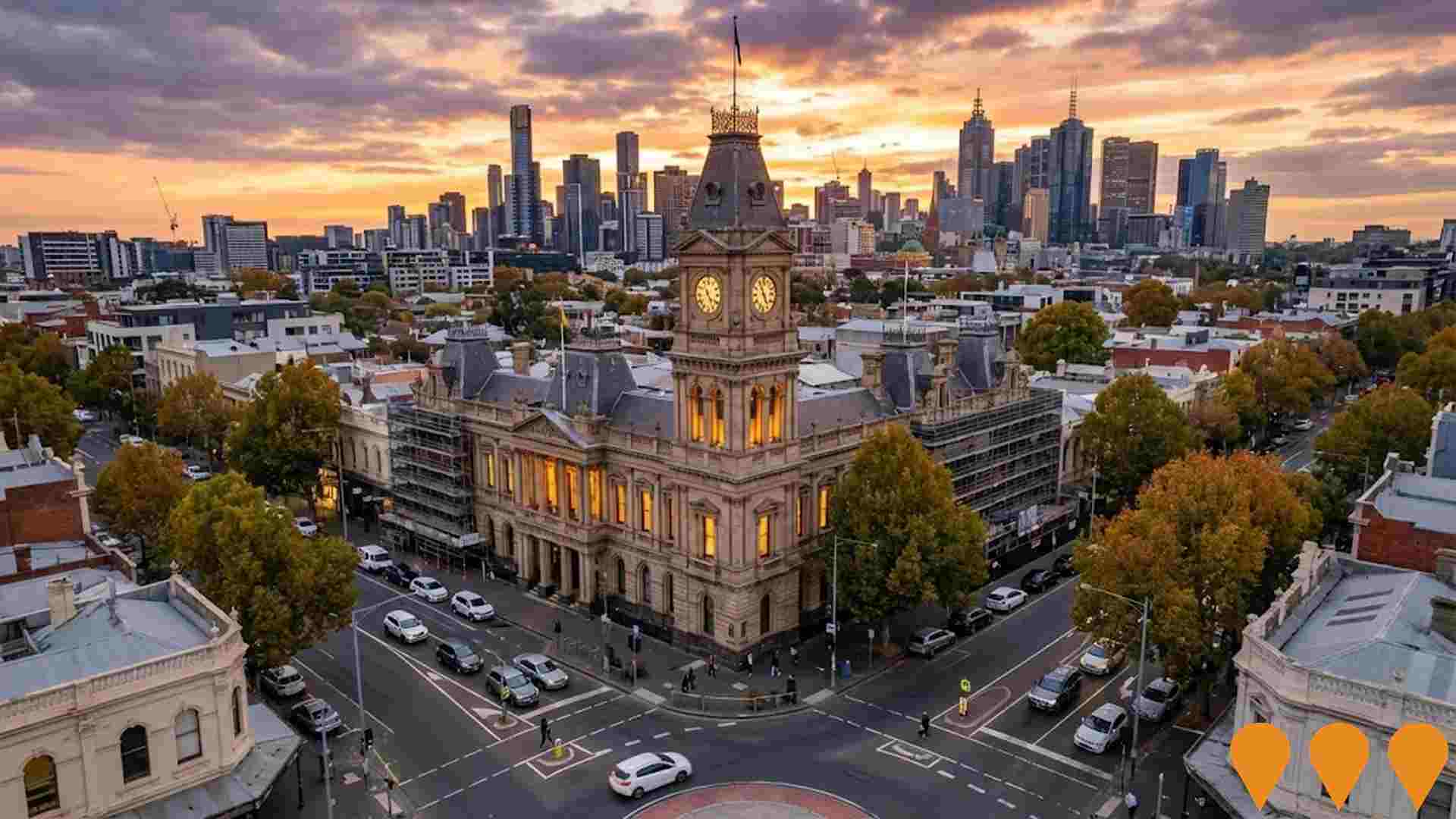
The Albertine
A boutique all-electric residential development featuring 98 luxury one to four-bedroom apartments across 15 levels. The project includes premium amenities within The Circadian Club (indoor pool, spa, gym, yoga studio, sauna) and The Elysian Room exclusive dining space on level 10 with panoramic Melbourne views. Designed with 7-star average NatHERS energy efficiency rating and located on the doorstep of Albert Park Lake.

Verde Arts Precinct
An exclusive collection of 174 one, two, and three-bedroom apartments offering premium living in the heart of Southbank's arts precinct. Designed by award-winning Bruce Henderson Architects, featuring SMEG appliances, engineered timber floors, and premium amenities including concierge services, co-working spaces, and rooftop terrace. Located next to Anzac Station with panoramic views over Melbourne's skyline, Royal Botanic Gardens, and Port Phillip Bay.
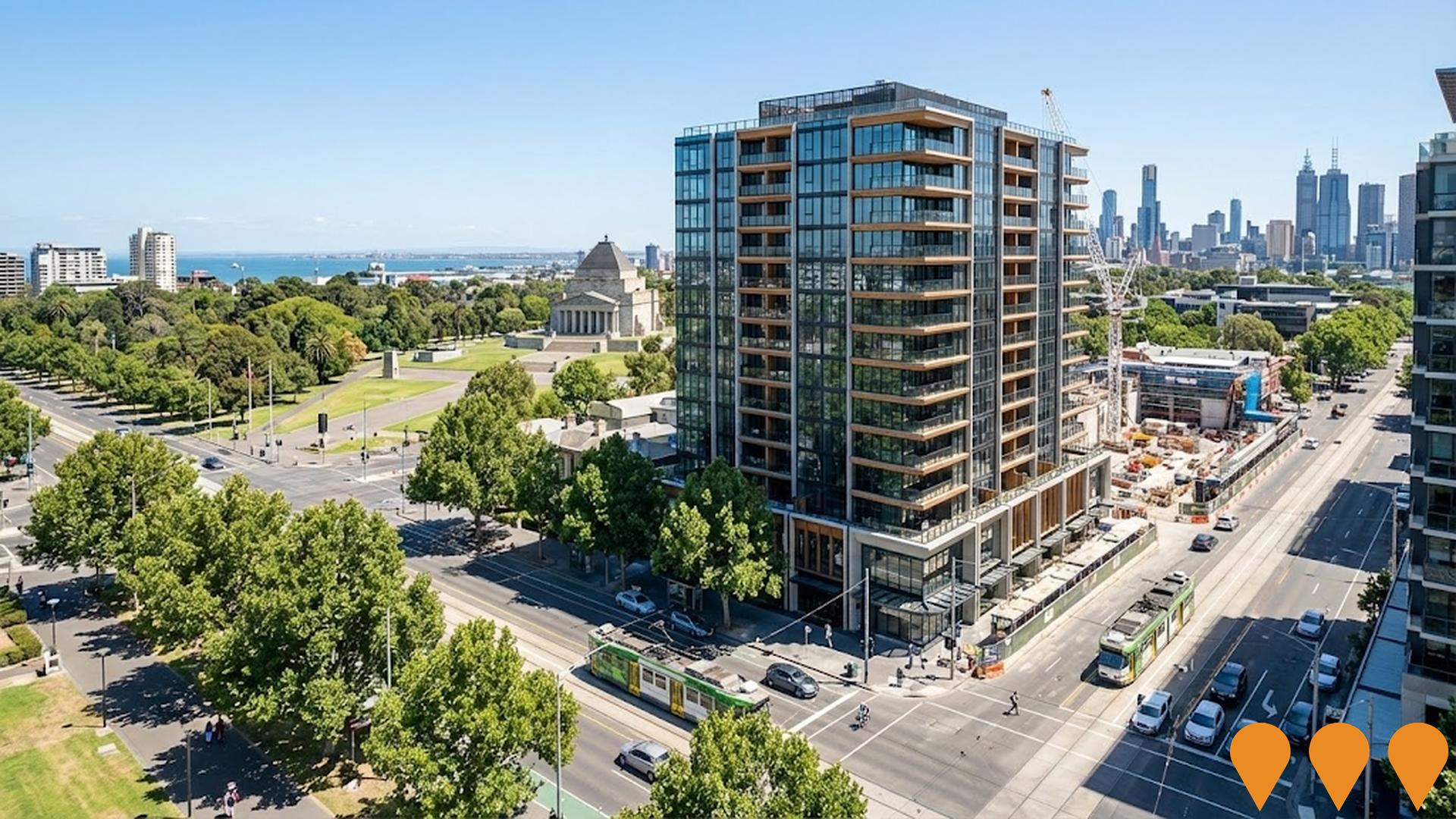
Moray House
56-storey residential tower featuring 305 apartments, eight floors of office space, co-working facilities, and extensive wellness amenities including a day spa, yoga room, pool, gym, private dining rooms, residents' lounges, and outdoor terraces. Includes a hotel-grade reception, cafe, and bar. Designed by Rothelowman architects with interiors by David Hicks.
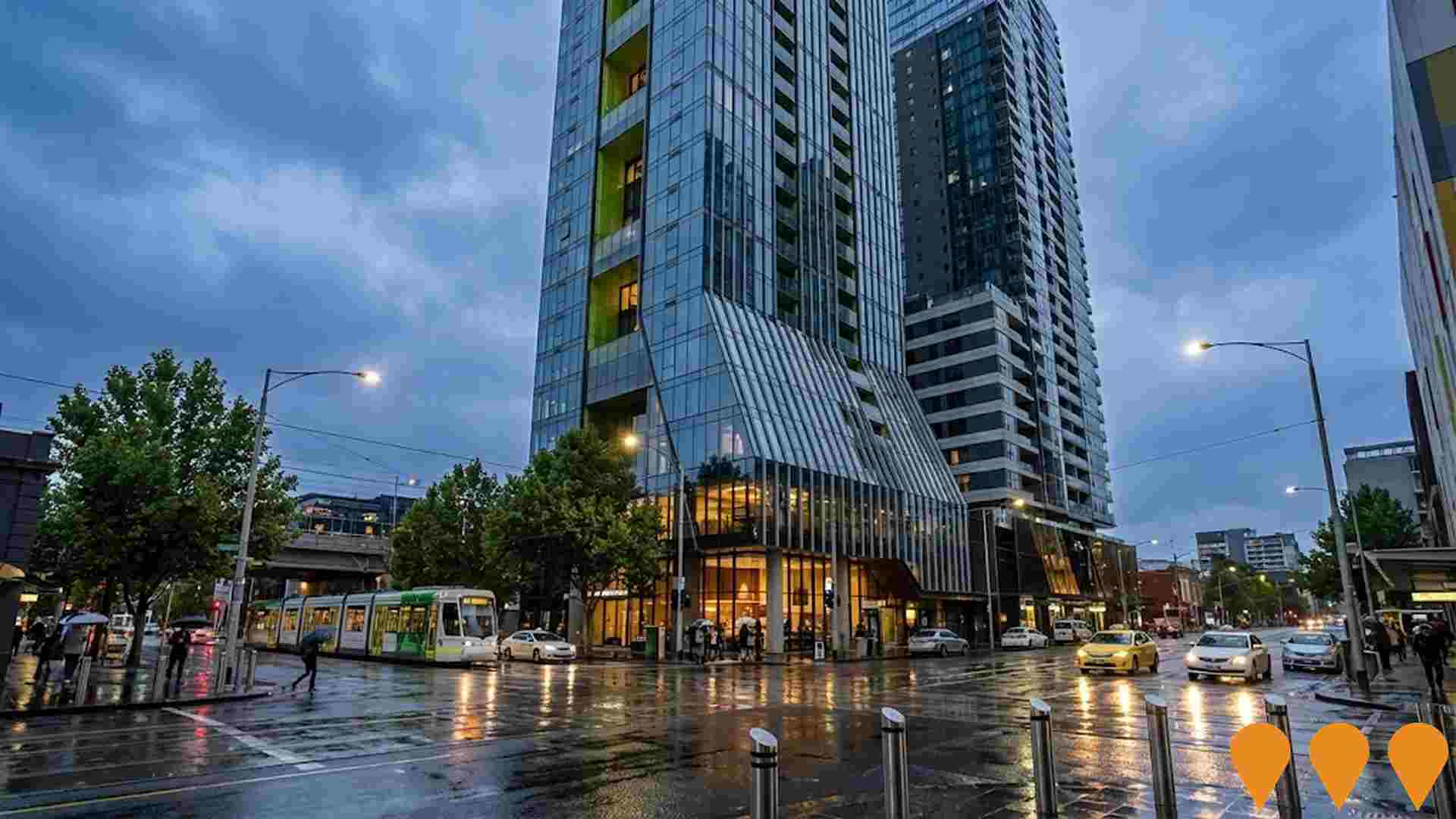
122 Moray
A $50 million mixed-use commercial project by Fortis comprising seven levels of premium office space (approx. 3,492 sqm) over ground-floor retail (approx. 303 sqm), designed by Fender Katsalidis with premium end-of-trip facilities and private terraces. Construction is underway with completion targeted for Q2 2026.
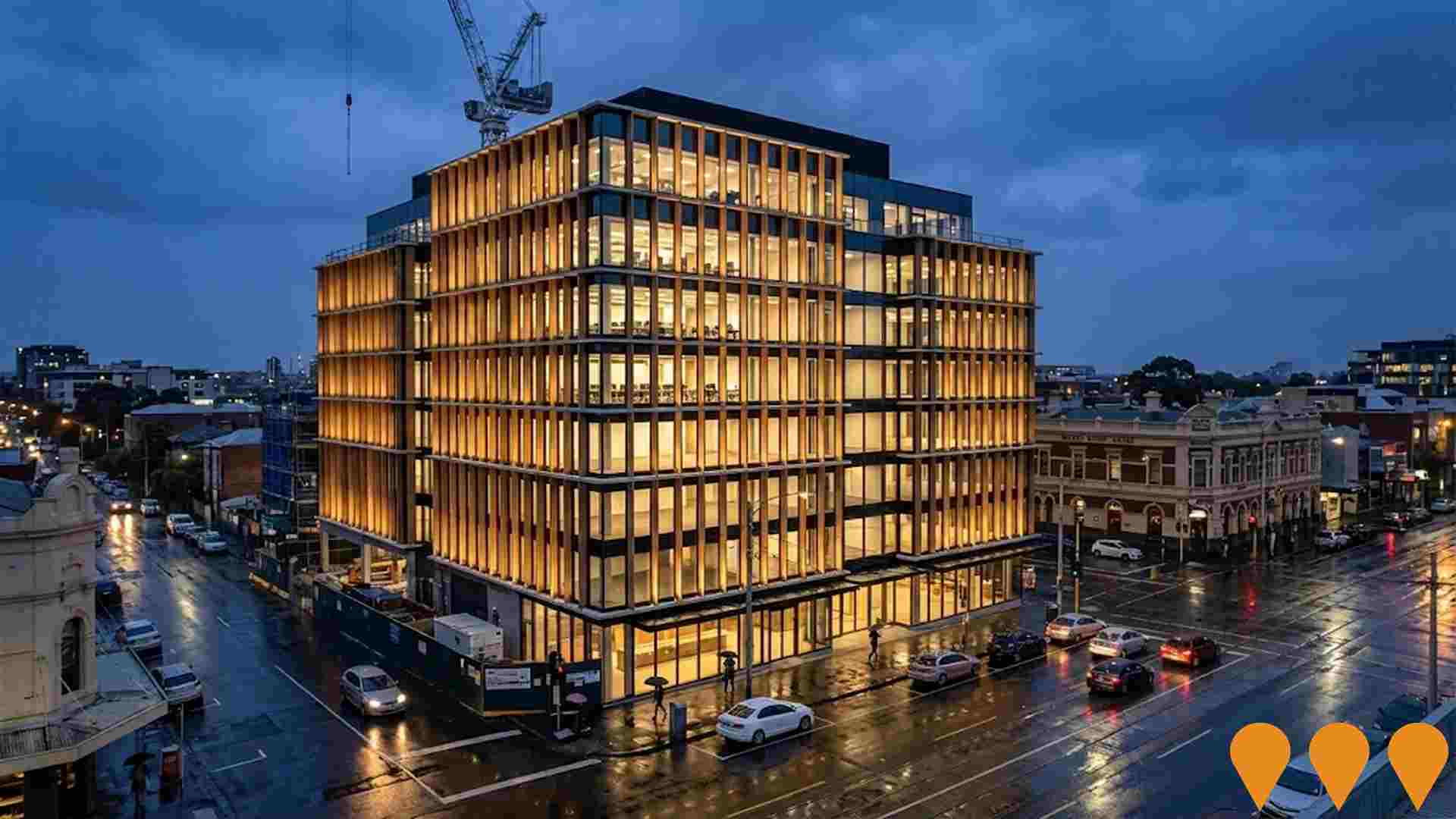
Employment
South Melbourne has seen below average employment performance when compared to national benchmarks
South Melbourne has a highly educated workforce. The technology sector is particularly well-represented.
As of June 2025, the unemployment rate was 6.6%. Over the past year, there was an estimated employment growth of 5.8%. In June 2025, 8,292 residents were employed while the unemployment rate was 2.0% higher than Greater Melbourne's rate of 4.6%. Workforce participation was similar to Greater Melbourne at 67.8%.
Leading industries include professional & technical, health care & social assistance, and finance & insurance. Professional & technical services had employment levels at 2.1 times the regional average. However, construction was under-represented with only 5.8% of South Melbourne's workforce compared to Greater Melbourne's 9.7%. There were 1.8 workers for every resident as at the Census, indicating it functions as an employment hub attracting workers from surrounding areas. Between June 2024 and June 2025, employment increased by 5.8% while labour force grew by 7.1%, causing unemployment to rise by 1.2 percentage points. This compares to Greater Melbourne where employment grew by 3.5%, labour force expanded by 4.0%, and unemployment rose by 0.5 percentage points. National employment forecasts from Jobs and Skills Australia, issued in May 2025, project national growth of 6.6% over five years and 13.7% over ten years. Applying these projections to South Melbourne's employment mix suggests local growth of approximately 7.3% over five years and 14.4% over ten years.
Frequently Asked Questions - Employment
Income
Income metrics indicate excellent economic conditions, with the area achieving higher performance than 75% of national locations assessed by AreaSearch
South Melbourne's income level is among the top percentile nationally according to latest ATO data aggregated by AreaSearch for financial year 2022. South Melbourne's median income among taxpayers is $68,937 and average income stands at $106,223. This compares to Greater Melbourne's median of $54,892 and average of $73,761 respectively. Based on Wage Price Index growth of 12.16% since financial year 2022, current estimates would be approximately $77,320 for median income and $119,140 for average income as of September 2025. Census data reveals individual earnings stand out at the 95th percentile nationally ($1,310 weekly). Distribution data shows the $1,500 - 2,999 earnings band captures 29.5% of South Melbourne's community (3,841 individuals), mirroring regional levels where 32.8% occupy this bracket. Higher earners represent a substantial presence with 34.4% exceeding $3,000 weekly. High housing costs consume 16.9% of income, though strong earnings still place disposable income at the 71st percentile nationally and the area's SEIFA income ranking places it in the 9th decile.
Frequently Asked Questions - Income
Housing
South Melbourne features a more urban dwelling mix with significant apartment living, with a higher proportion of rental properties than the broader region
South Melbourne's dwelling structure in the latest Census showed 4.6% houses and 95.5% other dwellings (semi-detached, apartments, 'other' dwellings), compared to Melbourne metro's 8.7% houses and 91.3% other dwellings. Home ownership in South Melbourne was 20.9%, similar to the Melbourne metro level, with mortgaged dwellings at 23.3% and rented dwellings at 55.9%. The median monthly mortgage repayment in South Melbourne was $2,217, above Melbourne's average of $2,170. Median weekly rent in South Melbourne was $421, compared to Melbourne metro's $420. Nationally, South Melbourne's mortgage repayments were higher at $2,217 versus the Australian average of $1,863, and rents were substantially above the national figure of $375.
Frequently Asked Questions - Housing
Household Composition
South Melbourne features high concentrations of lone person households and group households, with a fairly typical median household size
Family households account for 51.2% of all households, including 15.2% couples with children, 27.7% couples without children, and 7.0% single parent families. Non-family households constitute the remaining 48.8%, with lone person households at 43.2% and group households making up 5.6%. The median household size is 1.9 people, which aligns with the Greater Melbourne average.
Frequently Asked Questions - Households
Local Schools & Education
The educational profile of South Melbourne exceeds national averages, with above-average qualification levels and academic performance metrics
South Melbourne's residents aged 15+ have a higher educational attainment than national averages. 56.9% hold university qualifications compared to Australia's 30.4% and Victoria's 33.4%. Bachelor degrees are the most common (35.8%), followed by postgraduate qualifications (16.6%) and graduate diplomas (4.5%). Vocational pathways account for 20.1%, with advanced diplomas at 10.8% and certificates at 9.3%.
Educational participation is high, with 26.4% currently enrolled in formal education. This includes 8.7% in tertiary, 6.3% in primary, and 5.0% pursuing secondary education. South Melbourne's four schools have a combined enrollment of 888 students as of the latest data point. The area has typical Australian school conditions (ICSEA: 1037) with balanced educational opportunities. School places per 100 residents (6.8) are below the regional average (9.6), indicating some students may attend schools in adjacent areas.
Frequently Asked Questions - Education
Schools Detail
Nearby Services & Amenities
Transport
Transport servicing is high compared to other areas nationally based on assessment of service frequency, route connectivity and accessibility
South Melbourne has 39 active public transport stops, serving a mix of light rail and bus routes. These stops are spread across eight different routes, collectively accommodating 4,457 weekly passenger trips. Residents enjoy excellent transport accessibility, with an average distance of 144 meters to the nearest stop.
The service frequency averages 636 trips per day across all routes, resulting in approximately 114 weekly trips per individual stop.
Frequently Asked Questions - Transport
Transport Stops Detail
Health
The level of general health in South Melbourne is notably higher than the national average with both young and old age cohorts seeing low prevalence of common health conditions
South Melbourne shows better-than-average health outcomes for both younger and older age groups. Common health conditions have low prevalence in these cohorts.
Private health cover is exceptionally high here, at about 75% of the total population (9,727 people), compared to the national average of 55.3%. The most common medical conditions are mental health issues and asthma, affecting 9.1 and 7.2% of residents respectively. A significant majority, 72.1%, report being completely free from medical ailments, slightly lower than Greater Melbourne's 73.3%. South Melbourne has a higher proportion of seniors aged 65 and over, at 16.6% (2,157 people), compared to Greater Melbourne's 14.3%. Health outcomes among seniors are above average, mirroring the general population's health profile.
Frequently Asked Questions - Health
Cultural Diversity
South Melbourne is among the most culturally diverse areas in the country based on AreaSearch assessment of a range of language and cultural background related metrics
South Melbourne has a high level of cultural diversity, with 25.0% of its population speaking a language other than English at home and 37.2% born overseas. Christianity is the main religion in South Melbourne, comprising 37.5% of people. Judaism, however, is overrepresented in South Melbourne compared to Greater Melbourne, making up 1.5% versus 3.7%.
The top three ancestry groups are English (24.3%), Australian (17.2%), and Other (12.5%). Notably, Russian (0.8%) and French (0.9%) are slightly overrepresented compared to regional averages of 0.9% and 1.1%, respectively. Greek ancestry is equally represented at 3.2%.
Frequently Asked Questions - Diversity
Age
South Melbourne's population is slightly older than the national pattern
The median age in South Melbourne is 39 years, which is higher than Greater Melbourne's average of 37 years and close to the national average of 38 years. The 25-34 age cohort is notably over-represented in South Melbourne at 22.2%, compared to the Greater Melbourne average, while the 5-14 year-olds are under-represented at 6.4%. This concentration of the 25-34 age group is well above the national average of 14.5%. Post-2021 Census data shows that the 15 to 24 age group has grown from 8.7% to 10.3%, and the 25 to 34 cohort has increased from 20.7% to 22.2%. Conversely, the 45 to 54 age group has declined from 14.3% to 13.0%, and the 5 to 14 age group has dropped from 7.4% to 6.4%. Population forecasts for 2041 indicate substantial demographic changes in South Melbourne, with the 45 to 54 age group expected to grow by 55%, reaching 2,616 people from 1,690.
